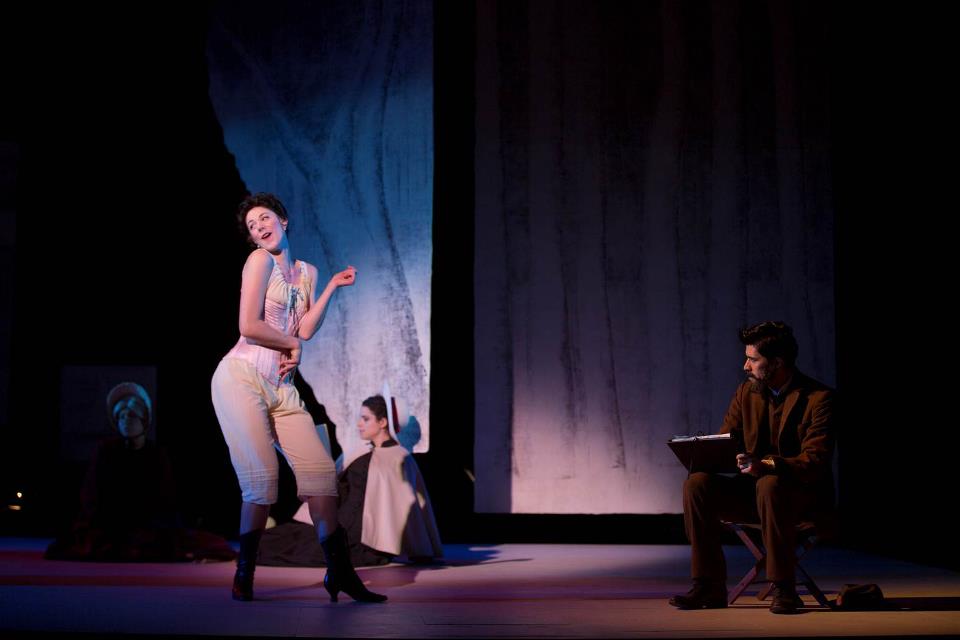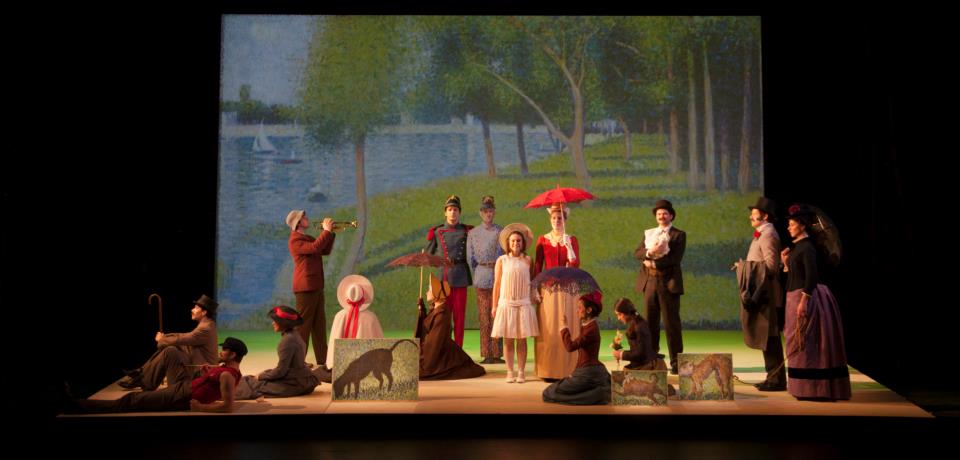Ever wonder what students in the Yale School of Drama do in the off-season? One answer is: form new theatrical groups. One such new group, Old Sound Room, was recently formed by two current students, Elia Monte-Brown and Dan O’Brien. The troupe consists of 3 other current students and 7 recent YSD grads. OSR’s inaugural production, Old Sound Room Lear begins this weekend, June 14th, and will run till the 23rd.

According to Adina Verson, a co-founder and a performer in the first show, the idea for OSR grew out of the interest in keeping YSD collaborations going after graduation. Verson also mentioned that some of the recent grads had wanted to work with some of their underclassmen and hadn't had many opportunities during their time at YSD. The creativity and talent of the group is assured, but how did the first production idea come about?
For various reasons, the idea of basing the show on Shakespeare was in the cards from early on, but the approach developed through themes the group wanted to explore, particularly inter-generational obligations of seniors to juniors, and vice versa, in our society. Shakespeare’s King Lear, of course, dramatizes the chaos that ensues when a king retires too soon, little suspecting how irrelevant a man becomes once stripped of his former title and duties. His daughters, who have little sympathy for his plight, take on the burden of reigning while also having to care for Lear in his erratic fancies. Verson and her colleagues sought out tenants of retirement homes who would share their views of the aging process and the challenges faced by those who have, like Lear, given up their occupations and duties in retirement. Fortunately, OSR gained the cooperation of the Lillian Booth Assisted Living Facility, which meant that the interviews were conducted with retired actors, from ages 75 to 90.
For Verson and her colleagues, the issue of “responsibility across generations” guided their discussions, trying to assess the younger generation’s obligation to the elder, and the elder’s duties toward the younger, as all families find themselves dealing with the aging of a generation that is long-lived and, as Baby Boomers, never were ones to give up their youth easily. The material from the interviews is scattered throughout the show, along with dance and expressive movement and musical interludes, to highlight the themes of Lear for our current times. The show should be “both a conversation and a confrontation with the separate worlds” that different generations tend to inhabit. By reaching out to retired or semi-retired actors, OSR pondered their own futures as well as the past of persons like themselves, still living in the light of the work they did, still dreaming of roles they would love to play.
Verson says that an impetus behind the innovative approach to the text was the tendency, as YSD students, to rework classics in a more contemporary theatrical idiom, coupled with the challenge of a young troupe—most of them under thirty—taking on the great canonical play of elderly tragedy. Another criteria for the production is that all members have an equal say in the performance, and, though three of the twelve-member group are unavailable to participate in the inaugural production, the show was arrived at democratically.
Michael McQuilken, the only member of the troupe trained as a director at YSD—his original play Jib, featuring his own songs and score, was his thesis show in 2011—directs OSR Lear, but, according to Verson, the role of Artistic Director means, for McQuilken, that he be an “enabler of all voices” in the group, making sure that all are represented in the final work.
Those who have followed YSD shows of the last few years—including work at the Yale Cabaret—will be familiar with most of the troupe already. Brian Wiles, William DeMerritt, Fisher Neal, and Adina Verson all acted in Louisa Proske’s thesis production of Cymbeline in 2010; Ashton Heyl, Dan O'Brien, Sophie von Haselberg, and Carmen Zilles performed in Ethan Heard’s thesis production of Sunday in the Park with George last fall, and O’Brien and Zilles played the title roles in Romeo and Juliet in the spring; Laura Gragtmans played Cleopatra in Antony and Cleopatra in 2012, and Elia Monte-Brown acted in Richard II this past spring; Neal, Verson and DeMerritt were also featured in Lileana Blain-Cruz’s thesis production of Doctor Faustus Lights the Lights in 2010.
For OSR, this show is only the beginning. The group raised over $24,000 through Kickstarter to fund a living wage for the actors during the show's run, which will be performed in a donated space. Future options may include finding a permanent home such as the Yale Cabaret enjoys, or to work within site-specific spaces for different productions. While the next production is uncertain, what is certain is that OSR Lear promises to be a thoughtful and skillful performance of particular interest to fans of YSD shows.
Old Sound Room Lear June 14th- 23rd, 2013: 14th & 15th @ 8pm 16th @ 2pm & 8pm 20th and 21st @ 8pm 22nd at 2pm & 8pm 23rd @ 2pm
General Seating: $18 Under 30/Over 65: $10
HUB Studios 165 Lenox Ave, btwn 118th and 119th 2/3 train to 116th
www.oldsoundroom.com

